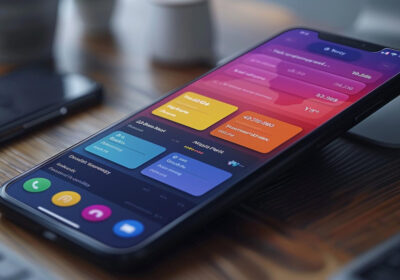When someone says something about mobile technologies, Android is one of the first things that come to mind. That’s how big it has grown. A recent report from StatCounter, an analytical company, stated that Google’s OS has surpassed Microsoft Windows as the most popular operating system when it comes to overall internet usage through desktop, laptop, mobile, and handheld devices collectively.
Android is also dominating the mobile application development sector. Google releasing updates to the OS further accelerates the growth of Android development. It hasn’t been long since the current version of Android, Nougat, was released. It brought many changes to the OS’s functionality, and added interesting features. But apparently Google doesn’t seem to be slowing down.
Android O is on its way, and from what we could gather from the developer preview, it would be bringing some noticeable changes in the Android realm.
Developer Preview 1
Google is reportedly still working on a title with the initial O for the new version of their flagship OS. The first developer preview was made available for Nexus 5X, Nexus 6P, Nexus Player, Pixel XL, Pixel C, and a few other variants of Pixel smartphones.
Notifications shade
You will notice visual changes when you swipe down the notifications shade. The toggles at the top have been reordered, and now takes a little more space on-screen. The font for data and time is now more concise, adding more visibility to status bar icons.
Handling notifications
Long-pressing on a notification gives you the option to disable all notifications from that app. Swiping the notification to the side a little gives you an icon for accessing Notifications toggle, and an icon to snooze the notification.
Quick settings
Google made some changes in the quick settings, now with a line underneath. The Quick Settings now have a double function. Tap the word underneath the toggle to open the mini settings menu. You can turn the setting on or off by tapping the icon.
Settings menu
Most of the visual changes in the new OS version is in the settings menu. The Settings menu is shorter compared to that in Nougat. Umbrella categories like “device”, “personal”, “wireless and networks”, and “system” have been replaced by descriptive sections like “connected devices”, “apps and notifications”, “networks and internet”, and “security and screen lock”.
System UI Tuner
The System UI Tuner lets you tune various things according to your preferences. You can enable the UI tuner by swiping down the notifications shade, and long-pressing the gear icon. The device vibrates when the option is added to the Settings menu.
The UI Tuner has four areas now.
- Status bar – You can still find the toggles to enable or disable icons that appear in the status bar.
- Do not disturb – You will find the option to enable ‘Do not disturb’ mode under the volume slider. Another option lets you add a volume button shortcut to toggle ‘Do not disturb’ when you press the volume down button.
- Navigation bar – Android O now comes with a layout option that lets you choose between normal, compact, left-leaning, and right-leaning. It’s also possible to add more buttons on the left and right side of the on-screen navigation buttons.
- Lock screen – The lock screen appears the same as in Nougat, but you can use the System UI Tuner to change the shortcuts in the bottom left and bottom right corners to anything you like.
Picture-in-picture support
The update will come with full support for picture-in-picture mode. With this feature, app developers will now be able to keep playing videos with video apps in a small window while navigating other areas or even other apps.
Audio
Sony’s LDAC Codec has now been included in Android O, which means LDAC-equipped Bluetooth headphones will have a much better quality in the OS. Android O also supports:
- aptX
- aptX HD
- SBC
- AAC
Notification channels
With notification channels, you can split app notifications into various themes you choose to block individually or allow. You can manage this by long-pressing an app notification in the notification shade or by accessing app notification settings.
Background process limits
Google has, as always, optimized Android O as well apparently, as the OS will limit background processes significantly.
Autofill API
Android O introduces Autofill APIs making it easier for apps to manage passwords better than in the previous versions of the OS. The autofill app stores form data such as usernames, passwords, and addresses.
Wide color gamut for apps support
App developers will now be able to use a larger palette of colors in Android O. According to Google, ‘Android developers of imaging apps can now take advantage of new devices that have a wide-gamut color capable display. To display wide gamut images, apps will need to enable a flag in their manifest (per activity) and load bitmaps with an embedded wide color profile (AdobeRGB, Pro Photo RGB, DCI-P3, etc.)’.
Developer Preview 2
Fluid Experiences
Like the name suggests, Fluid Experiences (announced at Google I/O 2017) makes managing multi-tasking tools fluid and enjoyable. Google’s machine learning tool, TensorFlow, got scaled down for Android O, and is named TensorFlow Lite. The new framework of Android O will provide the required hardware acceleration to neural network features.
Notification dots
Till now, we had to use custom Launchers to have a notification icon on top of the app icon on the homescreen. Android O has this feature now. You can notice a small dot over the app icons now with active notifications. Long-pressing the icon with the notification dot gives you access to a list of actions that include viewing notifications in a small pop-up window. However, the long-press action will supposedly come only in a future beta release.
Smart text selection
Android O will provide more options in addition to cut, copy, and paste once a text is highlighted. Google’s AI will determine exactly what you highlighted – a phone number, an address etc. and give you options accordingly.
Auto-Fill
The new OS version will remember your usernames and passwords letting you access apps quickly.
Vitals
Android O will feature several features collectively termed Vitals. Vitals will include security enhancements, OS optimizations, and developer tools. Google Play Protect that was announced by the tech giant’s Android team at Google I/O 2017 will also be included, visible as an entry in Google Play app update window. Google Play Protect will perform scans on apps, and inform you if it detects any issues.
Conclusion
Not all new features and enhancements revealed in the previews have been included in this article. The bottom-line is that Android O comes packed with so many cool features, continuing what Nougat started and giving more control to users. The OS will finally deliver many things we’ve been waiting for, like adaptive icons and app badges, not to mention support for next-gen Android peripherals.





